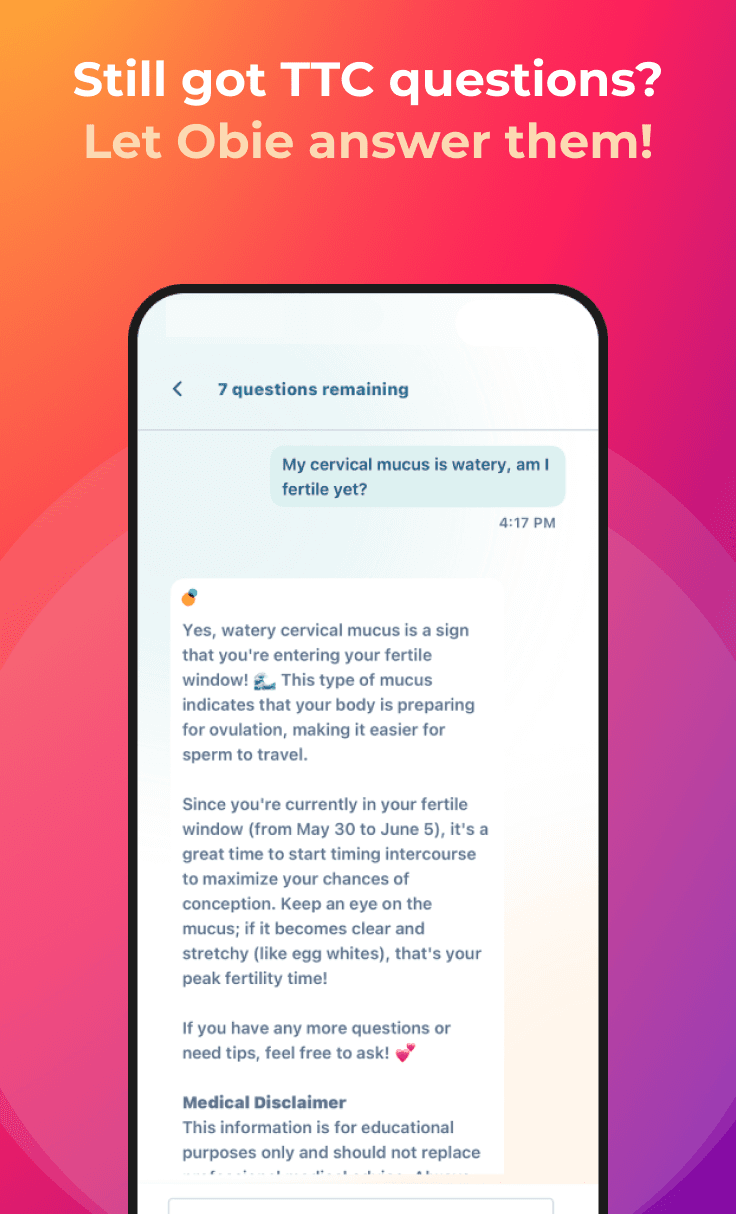Cervical Mucus and Ovulation: How to Track Fertile Signs for Conception
Fertility Awareness
Obie Editorial Team

Understanding the changes in your cervical mucus is like unlocking a natural signal from your body about ovulation. This method is not only straightforward but also highly effective in predicting when your ovary is releasing an egg, possibly more so than the basal body temperature method (BBT), though the two can complement one another.
The cervix produces mucus that serves distinct roles throughout the menstrual cycle. When you aren’t in the fertile window, this mucus acts as a barrier, preventing sperm from entering the uterus. As ovulation approaches, your body increases the production of cervical mucus, which becomes clear and stretchy – akin to egg whites – during peak fertility. This consistency helps sperm survive and travel towards the egg. For a visual guide on cervical changes during the cycle, you can refer to images HERE.
If we consider a typical 28-day cycle, the cervical mucus pattern could look like this:
- Days 1-5: Menstruation.
- Days 6-9: Minimal or no mucus, resulting in a dry sensation.
- Days 10-12: Mucus starts thick and sticky, then gradually becomes thinner and whiter.
- Days 13-15: Mucus is at its most fertile state – thin, slippery, stretchy, and clear like egg whites.
- Days 16-21: Mucus returns to a thicker and stickier form.
- Days 22-28: Vaginal dryness returns.
Remember, your cycle may vary, and tracking your own unique pattern on a fertility chart can empower you with personal insights to increase your chances of conception.
For optimal tracking, check your cervical mucus daily, such as each time you visit the bathroom. After thoroughly washing your hands, use a piece of toilet paper or your fingers around the opening of the vagina to detect mucus. Observe its color and consistency, and make a note of your observations.
Why focus on cervical mucus? Unlike BBT, which confirms ovulation afterward, changes in cervical mucus can signal upcoming ovulation. The mucus becomes noticeably more plentiful and elastic several days before the ovulation, allowing you to anticipate fertility. These changes usually cease within a day or two after ovulation.
You can check your cervix by gently inserting a finger or two into the vagina to feel the cervix. It feels firm, low, and closed before and after ovulation while being soft, high, open, and wet during ovulation.
For those curious about early pregnancy changes, note that examining the cervix won’t offer early clues as cervical changes in pregnancy occur later and are too subtle initially.
Adding an ovulation predictor kit (OPK) to your toolkit can further enhance your prediction accuracy. OPKs detect the surge of luteinizing hormone (LH) in urine. This LH surge signals that ovulation is imminent, typically occurring 12-36 hours after the first positive reading from an OPK.
Remember, elements like cervical mucus observation and OPK usage are powerful tools in your fertility journey. Embrace these insights and take proactive steps towards understanding and working with your body's natural rhythms.








